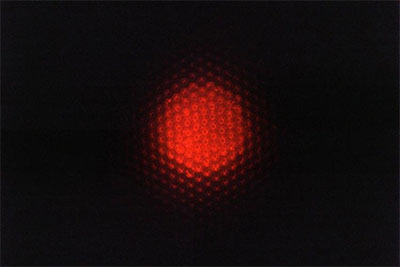Glass Wafers for Optical Darkfield Imaging
Get Your Quote FAST!
What is Optical Darkfield Imaging?
Darkfield photography was pioneered in 1990 when scientist Michael Schorr began studying the nature of color in photographs. He determined that when light is reflected from an object, it appears as a faint blue or green rather than the pure white of ordinary visible light. Since then, this technique has been used to create stunning photographic images which have generated a huge amount of interest among serious photographers and art enthusiasts. The use of Darkfield films in this field has been revolutionary, allowing photographers to capture the full spectrum of light available.

Optical Darkfield Imaging utilizes the principle of borofoil microscopy, wherein light is captured using a boroscope or tube with a very thin (or simply, thin) layer of glass called the substrate. The glass is exposed to the transmittance process in the Dark Field condition. In the Dark Field condition, objects appear black because they absorb all the visible light that passes through them. In the standard mode of operation, the substrate is exposed to visible light passing through the boroscope and the image captured on the film after it passes through the darkroom. The latter is referred to as the reflective mode of operation.
Schorr discovered that by exposing the glass in his horoscope to ultra-violet radiation, he could alter the properties of the horoscope so that it captured the image in the visible light spectrum. To demonstrate this, he placed two borofoam plates one at the bottom of the tube and another one at the top. After placing the plates on the bottom of the tube, he placed a glass plate on the top of the tube. Then, he turned on the transmittance machine and placed the glass at the top of the tube so that the radiation passed through it.
When he turned the transmittance machine off, he found that the image on the exposed substrate was shifted slightly off-center. In order to center the image more, he brought the tube closer to the bottom of the boroscope until the radiation emitted from the glass reached the bottom of the tube. From this, he was able to demonstrate that when we look through a boroscope, some of the lights are reflected back on to the surface of the substrate. He called these reflected lights "reflected lights" and used them in his optical dark field imaging, which he named as Dark Field photography.
Later, a fellow scientist G.W. optics developed boroplasties. He discovered that exposing glass to high temperatures caused the glass to bend. Then he invented boroplasties which made it possible for him to capture images through the horoscope. These boroplasties were later adopted by the photographic industry.
However, boroplasties are prone to shattering if they come in contact with too much heat. This is because when glass boroplasties are heated up to temperatures above 300 degrees Celsius they tend to break into small pieces. To resolve this problem, scientists developed more efficient ways of heating boroplasties and eventually developed the thermal cutters which simply cut the glass into thin layers of foil. These, in turn, produce much less distortion and better image quality.
The image produced by boroscope using boroplasties works because when you look through a boroscope, light rays incident on one side and then bounce onto the other. As a result, images appear as curved. Optical dark field imaging makes use of this phenomenon. This phenomenon was first realized by Sir Edwin Landseer, who was working in the R&D department of UK. It was later used in photography by Carl Einstein, thus vindicating Landseer's concept.
Today, it is easy for people to utilize boroscope by having them stand in front of a boroscope and look through a very small magnifying lens. In the past, however, it was much harder to accomplish such task. However, these days it is very easy to use boroscope by just making use of special equipment or simply making use of a boroscope camera. There are many scientific uses of optical, dark field imaging, and it has been extensively used in research laboratories worldwide.
